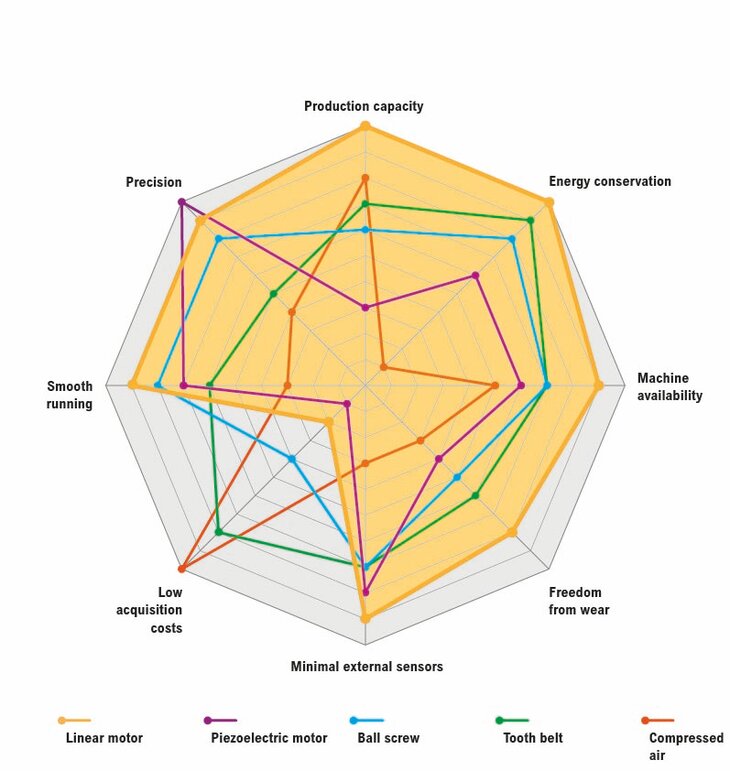Comparison of Linear Drive Technologies
Which linear drive technology offers the best combination of precision, efficiency, and durability?
A comparison of linear motors, screw drives, toothed belts, piezo, and pneumatic systems.
Which Linear Drive Technology Delivers the Best Performance?
In modern automation, linear motion needs to be precise, energy-efficient, and reliably durable. Five core technologies are available: linear motors, piezo drives, screw drives, toothed belts, and pneumatic systems.
On this page, we provide a clear, side-by-side comparison of all drive technologies across nine key criteria. Our evaluations are based on practical testing, measurable performance metrics, and extensive industry experience.
The aim: to help you identify the optimal technology for precise, dynamic, and long-lasting motion.
Comparison Across Nine Key Criteria
To make the differences between the drive types clear, each technology was assessed against nine key technical criteria.
Linear Motor
Direct, precise, and maintenance-free. The linear motor operates without mechanical transmission, achieving maximum repeatability with minimal wear.
Advantages: Precision, energy efficiency, wear-free operation
Piezo Drive
Extremely precise, but limited in stroke and force. Ideal for micro-movements in laboratory and optical applications – not suitable for industrial long-stroke use.
Screw Drive
Proven technology with simple components, but prone to wear and maintenance-intensive. Well-suited for basic positioning tasks, less ideal for high-dynamic applications.
Toothed Belt Drive
Cost-effective and flexible for long travel distances – however, limited in precision and long-term stability.
Pneumatic Drive
Fast and inexpensive, but energy-intensive, noisy, and hardly controllable – barely suitable for precise automation systems.
Conclusion: Why the Linear Motor Prevails
The linear motor delivers the objectively best combination of precision, dynamics, energy efficiency, and machine uptime.
This makes it the most sustainable and high-performance technology for modern automation.
Jenny Science consistently relies on direct drives, as they provide the highest precision, dynamics, and reliability over the long term.

